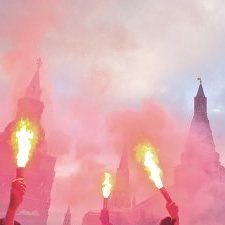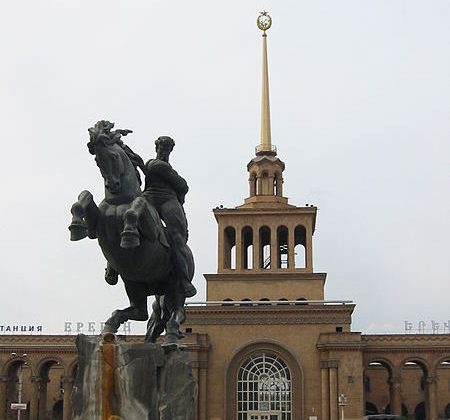(Co-authored by Andrey Makarychev and Olga Gulina) The Russian model of multiculturalism is in crisis having recently proven itself to be a mixture of intolerance, xenophobia, and racism. These sentiments have all been publicly legitimized by a false rhetoric of “national patriotism,” with “Russia for Russians” having become the most popular slogan among growing nationalist segments within Russian society. Kondopoga, Manezh Square, Pugachev, and now Biryulyovo, are but a few examples of the nationalist riots and pogroms which have spread throughout the country.
Russia is of course not alone in this. European countries have their own records of ethnic-based discontent (France in 2005, Great Britain in 2011, Sweden in 2013, etc.) Yet in Paris, Lyon, London, or Stockholm, protestors were mostly young immigrants. In Biryulyovo, it was the locals who went to the streets in search of a “people's justice,” demanding the immediate investigation into the murder of local resident Yegor Scherbakov by someone of “non-Slavic appearance.”
Such anti-migrant actions have spilled over all across Russia. Conflicts with migrant communities have been registered in Saratov, Krasnodar, Omsk, Volgograd, and Astrakhan. Even former Moscow mayoral candidate Alexey Navalny began a campaign to introduce visa regimes for residents from Central Asia and the Southern Caucasus, receiving support from Russian ombudsman Vladimir Lukin.
What appear to be nationalist outbursts actually display a deep mistrust of the state, especially in its ability to regulate migration flows. The Putin regime wants to use nationalist sentiments to cement the conservative hardcore of its ideology yet is afraid of the scale of possible disobedience expressed beyond the existing institutions.
This makes the political implications of the Biryulyovo incident quite serious. The Kremlin has found itself squeezed between liberal and nationalistic groups of street protestors. The two protest streams, while separated by obvious ideological distinctions, both share a mutual mistrust of Putin's rule, causing substantial complications for Putin in his political game.
Putin is currently stuck between two approaches on how to react to the Biryulyovo riots. One option is to portray the protestors as offenders of public order who engage in illegal actions and interfere in state's ability to govern. According to this logic, organizers of violent rallies are criminals who must be brought to justice much in the same way that the state took legal action against the Bolotnaya Square protestors earlier this year.
The second approach was in fact already announced by Interior Minister Vladimir Kolokoltsev. After a heavily armed police squad brought the Azeri citizen implicated in the murder of Scherbakov to Kolokoltsev’s office, the minister assured everyone that the state would keep doing its best to meet citizens' demands for order and justice. In other words, this Hollywood-style show de-facto justified the street riots by making clear that it is in fact these angry voices from below that caused the police to act more efficiently.
We see that while the Kremlin criminalizes the liberal opposition, it tries to play a more cautious game with nationalist groups, trying to decide if they should be portrayed as extreme nationalists or rather as patriotic citizens who love their country and have reached a point of desperation because of the state's inefficiency. The Kremlin seems as of yet not to have decided on what words will better serve its interests. The political landscape in Russia is changing so rapidly that even properly naming its new actors is a hard task.
Andrey Makarychev is a professor at the Institute of Government and Politics, University of Tartu, Estonia. Olga Gulina is a former research fellow at the Kennan Institute for Advanced Russian Studies.











